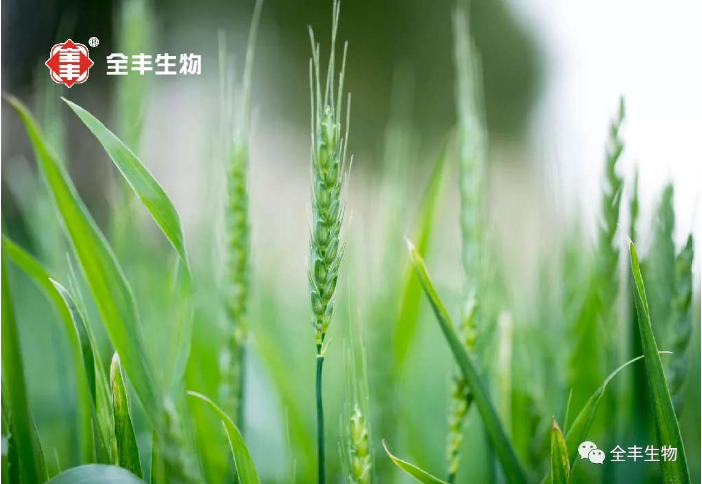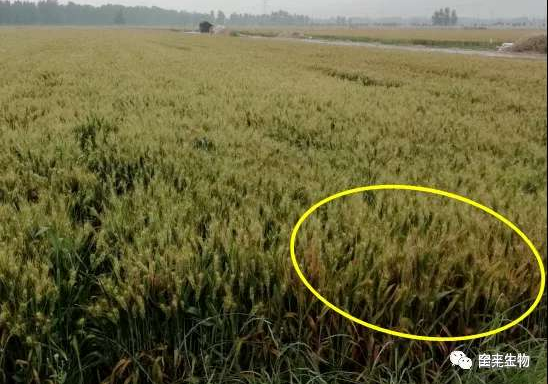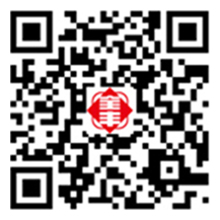Planting technology and management of wheat
Time:2023-01-31 Follow:876
Classification of wheat varieties: according to different sowing seasons, wheat can be divided into spring wheat and winter wheat. According to the different color of wheat grain, wheat can be divided into red wheat and white wheat, which are called red wheat and white wheat for short. According to the different grain quality, wheat can be divided into hard wheat and soft wheat, which are called hard wheat and soft wheat for short.
The Life of Wheat
(1) During the growth period, wheat undergoes a series of growth and development processes from seed germination, seedling emergence, rooting, leaf growth, jointing, booting, heading, flowering, and seed setting to the generation of new seeds, which is called the life of wheat. The number of days required from sowing to maturity is called the growth period. The growth period of wheat is generally 190~210 days.
(2) According to the growth characteristics of wheat at different stages, in order to facilitate cultivation and management, the life of wheat can be divided into 12 growth periods, namely, seedling emergence, trefoil, tillering, overwintering, turning green, rising, jointing, booting, heading, flowering, filling and maturity.
(3) According to the characteristics of wheat organ formation, several continuous growth stages can be combined into a certain growth stage. Generally, it can be divided into three growth stages.
1. The seedling stage is from emergence to start. It mainly carries out vegetative growth, that is, long roots, long leaves and tillers.
2. The middle stage is from the start to the flowering stage. This is a stage in which vegetative growth and reproductive growth go hand in hand. There are root, stem and seasonal growth, as well as ear differentiation and development.
3. The later stage is from flowering to maturity. Also known as grain formation stage, it is mainly reproductive growth.
Soil, water, nutrients, temperature, light and air are the necessary environmental conditions for wheat growth and development. To achieve high yield of wheat, on the one hand, we should select excellent varieties according to local conditions, on the other hand, we should create environmental conditions suitable for wheat growth and development through field management.
1. Land selection and preparation is the basis
Soil fertility is the basis for achieving high yield of wheat. Only by selecting an environment with good soil fertility and sufficient topsoil thickness can high-quality wheat be planted. At the same time, when selecting the land, it is necessary to clean the previous stubble, and then plough deeply in time, so as to make sure that the top is empty and the bottom is solid, so as to facilitate the seed germination and root stability. If necessary, certain drugs can be added in deep ploughing to prevent pests in advance.
2. Seed selection
Seed is the main factor to increase yield, and improved seed is the internal cause of yield increase, and is the basis for the development of agricultural science and technology. In the selection of seeds, we must combine the local soil conditions, select seeds with high yield, stability, quality, lodging resistance and high productivity, and pay attention to varieties with good economic benefits and early maturity.
Before sowing, we should choose a good weather for about a week to sun the seeds, which can not only prevent mold and insects, but also improve the germination rate and promote the yield. Air drying once a month and 10 days before sowing will reduce the rate of insect erosion and increase the germination rate.
In addition, seed dressing is also necessary. Seed dressing is the measure of mixing fertilizer, pesticide and wheat seeds in a certain proportion, and then mixing them repeatedly to make the fertilizer and pesticide evenly adhere to the surface of the seeds. The amount of seed mixing is small, the operation is simple, and the effect is good. For diseases and insect pests transmitted by seeds, seed dressing has almost become the only control measure, which not only eliminates the seed carrier, but also protects the seedlings from infection.
3. Seeding management
According to the specific local conditions, select a better farming mode. According to the specific situation of the year, sow in time at the sowing time, and select a better sowing amount according to the soil and weather conditions. Generally, due to the poor soil conditions in the middle field, the planting amount can be appropriately increased, and the goal of increasing yield can be achieved by increasing the number of main stems and ears as much as possible. If it is a high-yield field, it is unnecessary, as long as it is carried out according to the normal seeding rate. If it is too much, it will easily reduce the permeability, reduce the individual growth ability, and then lead to lodging and reduce the yield. In a word, the amount of seeding is the key to establish a reasonable population structure. There must be certain differences in seeding amount with different varieties. The depth of 3-4 cm is better. Such seeding can ensure the seedlings are neat and strong, and then promote the yield and achieve the purpose of increasing income.

4. Strengthen field management
First of all, from seedling emergence to tillering, wheat mainly grows leaves, roots and tillers. After seedling emergence, seedlings should be thinned at the first time to improve the uniformity of seedlings. If the weather is too dry, water it in time to ensure that the wheat can take root at the first time, tiller in time, improve the growth ability of the seedlings and strengthen the cold resistance of the wheat. For the wheat field with weak growth, the tillering fertilizer should be applied in time during the overwintering period. Generally, urea is the main fertilizer. If the fertilizer is not applied in time, the fertilizer should be applied in time in the next spring to promote rooting and tillering.
The amount of water for winter irrigation of wheat should not be too large. It is better to be able to water thoroughly and completely on the same day. Generally, 30-40 cubic meters of water are irrigated per mu. In order to save water, it is necessary to complete the ditch and border to prevent flooding. After winter irrigation, timely hoe and loosen the soil to close the cracks, so as to maintain moisture and increase temperature.
Prevention and control of dead wheat seedlings in winter: remove dead leaves and increase photosynthesis; Topdressing nitrogen fertilizer to promote rejuvenation; Water timely according to local conditions; Foliar fertilization to supplement nutrition; Cultivate and hoe, increase temperature and keep moisture.
Secondly, when it comes to the jointing stage and the late growth stage of wheat, nitrogen fertilizer should be applied again. If the weather is dry, irrigation and fertilization should be combined to achieve better results. However, if the planting area is large and the seedling condition is relatively prosperous, it is necessary to delay the application of fertilizer to the late jointing stage, but it is necessary to reduce the amount of fertilizer properly. At the same time, for some fields with relatively good terrain, some herbicides should be added appropriately to remove weeds in time, so as to ensure the nutrition of wheat seedlings and promote the improvement of yield.
The heading and flowering period of wheat is the key period for the formation of wheat yield and the peak period for the occurrence of diseases and insect pests. During this period, attention should be paid to the prevention and control of diseases and insect pests such as scab, stripe rust, powdery mildew, aphid, etc., to reduce the damage of plant diseases and insect pests, and lay a foundation for the later high yield of wheat.

The head blight harms the ear of wheat: it causes the half-cut and withered ear of wheat, and the ear of wheat turns red when the field humidity is high; It is recommended to use triadimefon · tebuconazole, cyanoxylate, cyanene · hexazol and other chemicals for prevention and control.
Thirdly, when the wheat grows to the filling stage, it can be sprayed with 1% - 2% urea solution. If the phosphorus and potassium elements in the soil are insufficient, 0.2% - 0.3% potassium dihydrogen phosphate solution can be appropriately increased to ensure the demand of plants for trace elements.
Later, in the later stage of management, the main concern is the weeds in the field. Many weeds can not reach the goal through manual removal. Therefore, the grower should analyze the factors such as the type of weeds in the wheat field and select a better herbicide. The weeds in the wheat field are mainly monocotyledonous gramineae. For this kind of weeds, the main herbicides can be used, such as pygmalion, chlorpyrifos and isoproturon. For some plots with relatively more weeds, butachlor and trifluralin can be mixed and sprayed; If there are many broad-leaved grass in the plot, use good to eliminate it. In addition to the selection of herbicides, attention must also be paid to the humidity of the environment when using herbicides. Generally, it is better to keep the temperature above 10 ℃ after water. Try to spray when the seedlings are relatively small, so as to achieve the purpose of weeding, improve the cleanness of the wheat field, and promote the yield.
5. Management of harvest period
(1) Water the wheat straw well
After the waxy ripening of wheat, proper water supply can prolong the life of functional leaves, strengthen the accumulation and operation of photosynthetic products, especially in the rainy years, it is more important to water the wheat yellow water well, which can not only prevent the dry heat wind damage in the later period, but also promote the 1000-grain weight. According to the survey structure, the yield can be increased by about 10% by watering the wheat yellow water. Generally, watering the wheat yellow water after the wheat falls yellow can prevent late ripening. At this stage, the head of wheat spike is heavy, but we must pay attention to the weather conditions. If we encounter strong wind after watering, we can easily fall down. We must ensure that there is no strong wind in a day, and at the same time, we must control the amount of watering, not too much.

(2) Grasp the exact harvest date
The harvest season is when the wheat enters the late stage of waxy ripening. At this time, the wheat color turns yellow, the stem is elastic, the grain moisture content is also high, and the hardness is good and shiny. Another key step is to remove impurities. Only after removing impurities can the wheat reach a certain purity and achieve real high yield.




